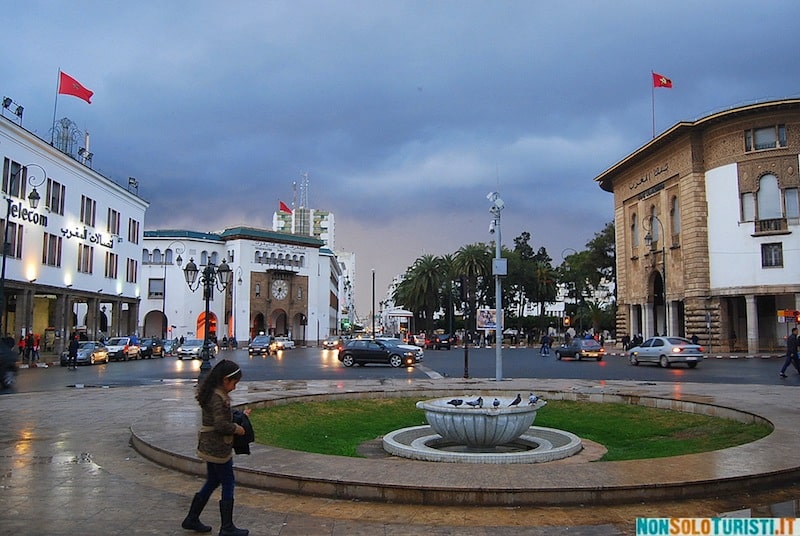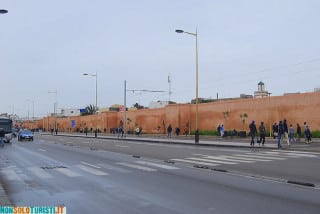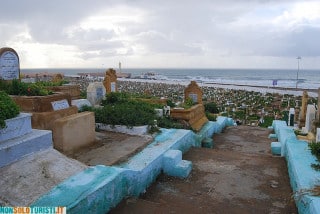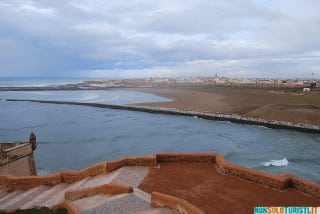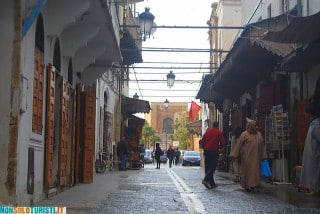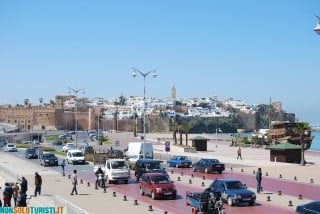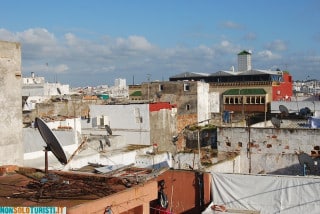To get to Morocco from Tarifa, Spain’s southernmost tip celebrating the encounter between arab and Western world, there are ferries every hour between nine in the morning and six in the evening.
After on hour and a half – more than double the expected time due to bad weather – I arrived in Tanger and got a taxi to take me to the train station. But hurrying was already useless, I lost my train to Rabat, the capital of Morocco, and will start this leg of my journey apologizing for being late. Again.
When I was in Spain, telling people I was headed to Rabat, the answers were mostly uncertain and surprised looks. Rabat isn’t much beloved from tourists nor Moroccans, but it’s a quite and friendly town. “It’s a good way to get in touch with Morocco for the first time”, explained to me Soufiane, the project coordinator of Projects Abroad, an NGO based in the UK and operating several projects in Rabat, as in many other countries. I will be their guest for about one week, nosing in their activities and trying to figure out the Moroccan society.
From Rabat Agdal, the modern and refined part of town, we arrived in Rabat Ville with a white cab, one of those always driving over the same route, while the blue ones take to the exact address requested by the passenger. In both cases be prepared to share your place with up to five more passengers, collected on the way and squeezed without mercy in the vehicle.
My host family lives beyond the medina crowded with clothes and food shops, while the other medina only hosts artisans and their handcrafted items. Atmane and his wife Hanane welcomed me with great kindness and tea was ready with bread, honey and a spicy sauce. During the day I would deal with three of such breaks, added to the usual three meals.
On my day off from interfering in Soufiane’s work, I met Rasheed, Hanane old friend and unquestionable king of Rabat’s guides. Speaking perfectly French, he led me to discover the muslim graveyard located behind the medina, right in front of the sea, with the tombs placed in a way allowing the defuncts to look towards the Mecca laying on a flank.
I soon came to understand that Rasheed wasn’t just my guide, he was my bodyguard and my advisors for buyings and directions. He knows everything and everyone, including which corners a traveller shouldn’t roam on his own. There is no need to worry about one’s safety, but pickpockets are constantly aimed to wallets, cameras and mobiles.
We entered the Kasbah of the Udayas, whose candid buildings are veiled with blue because that specific lime holds off the mosquitos. We get in the way of artisans busy with wood and leather, we walk over their studios and reach the rooftops to enjoy the sight of the whole town.
After a tea and some small talks, Rasheed left me and I wondered through the streets of Rabat. The people are friendly and very helpful. With some French and my terrible Arabic I managed to get back in Rue Mohammed V, one of the town’s main road, entitled to the actual ruler grandfather.
The king is an untouchable figure here in Morocco. People may protest the government and the politicians, but there is no situation where the name of Mohammed VI isn’t followed by the usual “may God assist him”. Hard to say when is the case of sincere admiration, and when the speaker is just afraid of the ruthless Moroccan secret police.
To detonate the Arab Springtime in his own country, the king of Morocco extended to his subjects a new constitution, granting greater civil rights and further empowering the elected government, but the country still struggles in implementing its principles through solid laws and the it’s hard to tell how the people living in the rural areas will be affected by the country’s new development.
A degree in journalism and a professional limbo ranging from press offices to newspapers, magazines and finally the web. I lived in Verona, Zurich, London, Cape Town, Mumbai and Casablanca. I hate flying and I love jodel music. And when I grow up I wanna be a cosmonaut.
